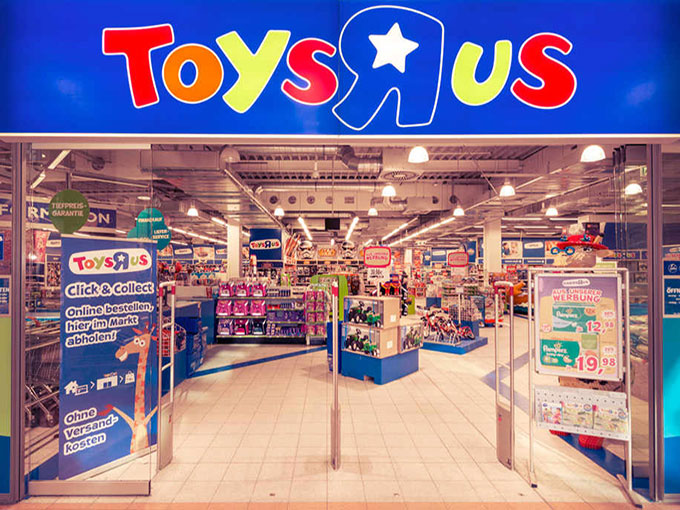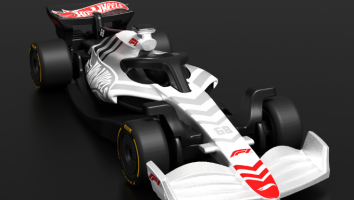As the 2010s come to a close and we prepare for another Roaring Twenties, Kidscreen is looking back at the decade and some of the biggest moves that shaped the industry. Today, we are examining some of the most significant toy trends of the past 10 years.
In the same way that Tickle Me Elmo and Furby came to define the ’90s, a number of products, categories and themes captured kids’ imaginations in the 2010s. Some products will be remembered for launching new play patterns (hello, Hatchimals), while other toys benefited from larger industry shifts—like the rise of YouTube in marketing. From Toys “R” Us closing its doors to the collectibles craze, we’re taking a walk down memory lane and looking at the consumer products stories that defined the decade.
Goodbye big box
That noise? It’s the sound of a door closing, and it reverberated across the entire kids industry when Toys “R” Us began shuttering its US operations in March 2018. The retail giant filed for bankruptcy protection in September 2017, after launching a transformation strategy three years before with a focus on optimizing its e-commerce business. TRU is now opening smaller-footprint stores under the new Tru Kids Brands umbrella, but in the aftermath of the bankruptcy many toycos reported declines in revenue attributed to the retailer’s closures. Hasbro reported a 12% drop in fiscal 2018, Mattel’s net sales fell 8% to US$4.51 billion for the full years and Jakks Pacific’s net sales dropped 7% to US$567.8 million. The ripple effects of the closure are likely to bleed into the next decade.
Princesses and pigs, oh my!
Sleeping Beauty and Peppa Pig might not look like sisters, but they both joined the Hasbro family in the 2010s. The Rhode Island-based toymaker took over global rights (excluding Japan) to make dolls based on the Disney Princess and Frozen brands in 2016, taking over from Mattel (That year, Mattel’s fiscal saw net sales drop 8% and Hasbro reportedly approached Mattel with a takeover offer in 2017). Then, earlier this year, Hasbro entered an agreement to acquire Entertainment One for US$4 billion—a deal that includes hit kids IPs Peppa Pig and PJ Masks—as the toyco continues to build out.
Crazy for collectibles
Kids have been collecting things for ages—rocks, coins, miniature toys inspired by products in the grocery store. Sound weirdly specific? That’s because Moose Toys bowed its Shopkins brand in 2014, igniting a collectibles craze that shows no sign of slowing down. In fact, toymakers like MGA Entertainment and WowWee launched new collectibles ranges just in time for the 2019 holiday season.
Press play
YouTube became a crucial part of the consumer product landscape in the 2010s. Not only is it important to advertise your products on the platform, but toymakers now need to keep a sharp eye on the influencers and trends that emerge from the YouTube ecosystem. Take slime, for example, which quickly evolved from DIY videos on YouTube to the inspiration behind products from the likes of Moose Toys. And, of course, there was the ever popular…
More than meets the eye
…blind packaging and unboxing, which were major crazes this decade—just ask Ryan ToysReview. MGA Entertainment’s L.O.L. Surprise! range took full advantage of the craze, with miniature fashion dolls packaged inside multi-layered balls that reveal various accessories when unwrapped. The brand proved so popular that, according to The NPD Group, eight of the 10 top-selling traditional toy items of 2018 were L.O.L. Surprise! products.
Hatching a hit
A natural companion to that blind package craze came in the form of intricate unboxing mechanisms, first kicked off by Spin Master when it launched its hit Hatchimals brand. Not since Furby has an interactive companion caused such a frenzy, with Hatchimals helping the toyco’s Q3 2016 grow 22.8% to US$475 million. The brand has since expanded into a full-blown franchise, with content and a Colleggtibles line.
Going green
Millions of students took to the streets in September as part of the largest climate protest in history. Children are calling for change, and that includes their consumer products. Kidcos like Hasbro, The LEGO Group and Nickelodeon are listening, launching environmentally-conscious initiatives that see them reduce packaging, focus on plant-based plastics or replace traditional fabrics with recycled materials.
(Kids just will not) Let it go
2013 was the dawn of a new ice age. Disney’s Frozen, released in November of that year, grossed more than US$1 billion at the global box office, and the House of Mouse reported its consumer products sales increased by 7% in 2014 thanks largely to film-related toy sales. This year’s sequel Frozen 2, meanwhile, has so far earned US$920 million at the global box office, and toys continue to fly off shelves.
Location, location, location
You can probably thank Instagram for this: As (largely) parents hunted for social currency (crazy photos and experiences to feed their social platforms), location-based brand extensions took center stage in 2017 and have been in the spotlight ever since. And it’s not just pop-up shops that have been cropping up around the globe—everything from family entertainment centers to live stage shows are capturing kids’ attention.
Stay tuned the rest of the week for a look at movie, TV and tech trends that took over the kids space in the last decade. And check out the decade in review landing page if you missed anything.

























